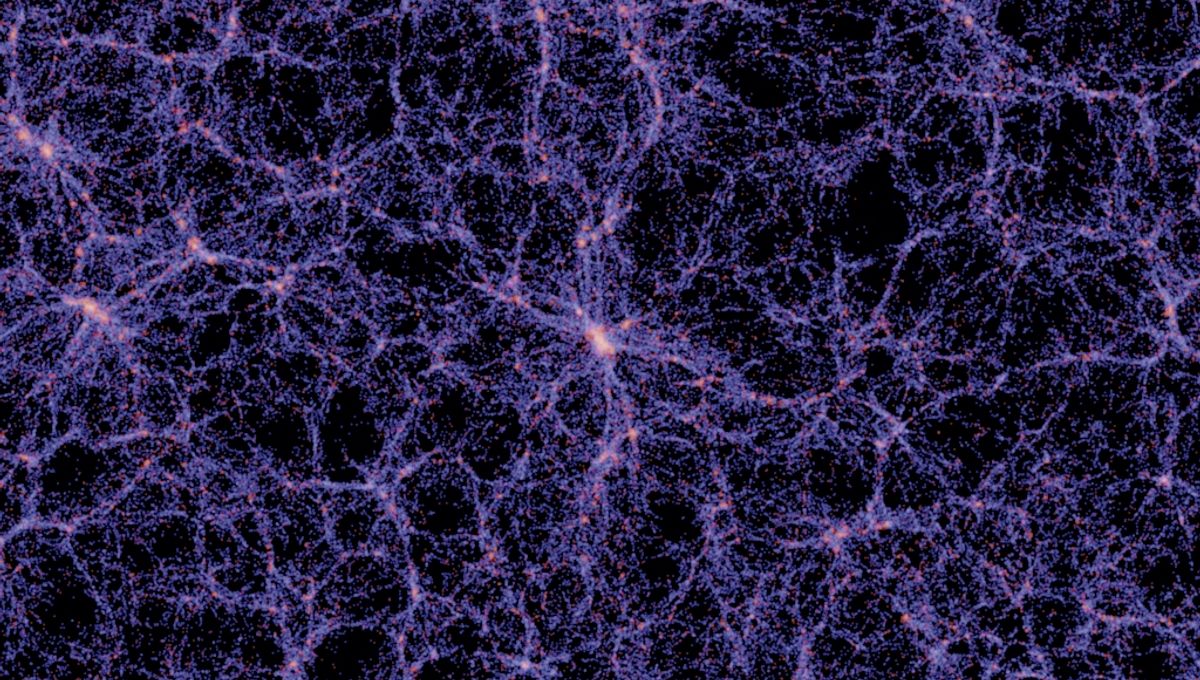
When we look for “the biggest” in the universe, it is important to specify our definition of the object of study. Is it something indivisible and with a neat boundary, like a black hole? Or do we prefer fuzzy edges so we can talk about galaxies? But if we are looking for the BOAT, the biggest of all time (and space), there is only one answer: the cosmic web.
This is how the universe is organized. Galaxies can be found quite isolated, in groups, or in clusters. And no matter their location, they are likely to be involved in a supercluster of galaxies. The superclusters are connected by filaments, sheets, and walls. Between these, there are enormous voids. The “web” in the cosmic web showcases the interconnection between the structures, but the distribution can be visualized as foam: galaxies are in the soapy water, the bubbles are the void.
Larger than you can picture
The structure of the cosmic web itself is not easy to see. The connection between clusters and superclusters of galaxies is made by tenuous gas. Understanding of the large-scale structure of the universe came first from discovering the distribution of galaxies at large scales, and it is a relatively recent discovery. It was only in the 1980s that this picture began to form, and it is much more recently that we have developed instruments sensitive enough to study the filaments directly, or to see several filaments of the cosmic web at once for the first time.
The gas is not the only component of the filaments. The filaments are made of dark matter, a hypothetical form of matter that only interacts with the rest of the universe through gravity. It’s called dark but it is actually invisible, since it doesn’t interact with light. And while we do not have direct evidence of its existence, it is actually the cosmic web that gives us some important hints.
Simulations of the universe using dark matter and dark energy – a hypothetical form of energy responsible for the accelerated expansion of the universe – create a picture of the universe that is remarkably similar to observations. By using the standard model of cosmology, where dark matter and dark energy are as fundamental as regular matter, light, and gravity, you end up with a cosmic web like that we can measure out there in the universe.
And while we can’t see dark matter filaments, researchers are getting pretty clever in finding evidence of their existence. For example, a team used the distortion of light created by massive objects as an indirect way to “see” this dark matter.
Is there an end to greatness?
The cosmic web has its rules. You are not going to find specific structures within it larger than a certain value. If we zoom out from galactic scales, we will find the lumps that make galaxy clusters, a few million light-years across. We zoom out again, and we finds the filaments, the walls, arcs, and bubbles that make up the cosmic web. But what happens if we zoom out again. Well, we reach the end of greatness.
This extremely poetic term summarizes a size above which the universe doesn’t look lumpy any more and that is at about 300 million light-years. If like some looming deity we could project ourselves to see the universe at that scale, the cosmos would appear to be uniform and isotropic. That means that it would be the same at every point and look the same in every direction. At that scale, voids and filaments don’t matter. For a culinary metaphor, it’s like the crumb of a cake. You want it delicious and consistent at the level your tastebuds appreciate, but under a microscope, it would not look that regular.
Still, the standard model doesn’t preclude structures extending further than 300 million light-years. The theory suggests that up to about 1.2 billion light-years things can exist without being a problem. So imagine the surprise of astronomers finding a few larger structures, namely the Giant Arc and the Big Ring: the first a crescent of galaxies extending for 3.3 billion light-years, and the second a circle of galaxies with a radius of 1.3 billion light-years.
An interesting challenge to square, whether a matter of theory or observations. Still, the universe extends for tens of billions of light-years in every direction, and so does the cosmic web, even if there might be the occasional clump we can’t quite explain yet.
Source Link: Meet The Cosmic Web – The Largest Structure In The Universe